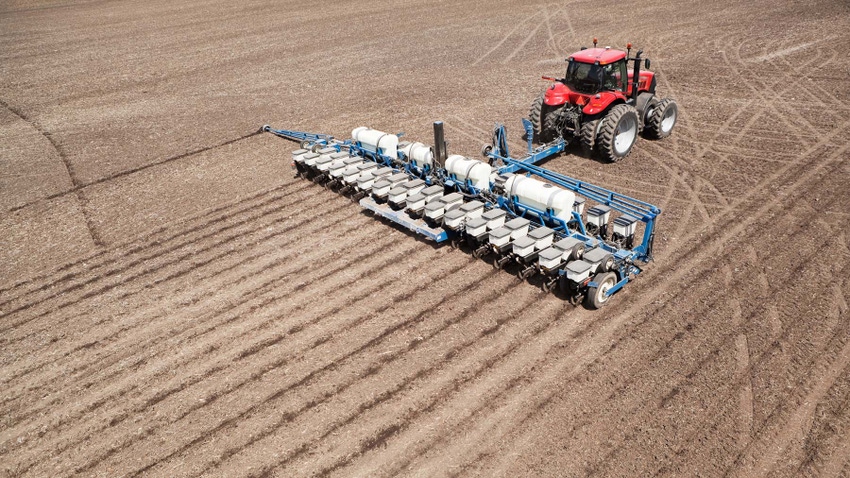
Markets had been bracing for high 2024 corn acreage, but USDA’s farmer-surveyed Prospective Plantings report found that 2024 corn acreage is going to see a bigger decline than what had previously been expected. Farmers only expect to plant 90.0 million acres of corn this spring, down nearly 5% (4.6 million acres) from year ago sowings. Chicago futures prices rose nearly 3% higher ($0.11-$0.13/bushel) immediately following the report on the smaller supply estimate as well as higher-than-expected December through March corn consumption.
Soybean acres are forecast to see a 2.9-million-acre annual increase, rising to 86.5 million acres planted in 2024. That’s going to be the fifth-largest planted soybean acreage in U.S. record books if farmers are able to hit that target in the coming weeks.
“I think it is important to remember that Thursday’s numbers are intentions, not an actual estimate of what will be planted,” according to Farm Futures grain market analyst Jacqueline Holland. “But as I’ve mentioned earlier, some of the trends are telling. The shift towards a 50-50 split for corn and soybean acreage is very apparent this year. Crop budgets for soybeans are currently holding on to very slight profits, while corn budgets are far into the red so growers that opted to wait until this spring to make acreage decisions likely found themselves favoring soybean acres over corn this year.”
The past three Farm Futures grower surveys in August 2023, January 2024 and March 2024 all pointed to a one-to-one acreage shift between corn and soybeans, says Holland, who added that she was a little surprised that today’s Prospective Plantings report did not reflect a similar dynamic.
Planting intentions
USDA estimates that 2024 corn plantings will reach 90.025 million acres. That’s a 4-million-acre-plus drop compared to 2023’s footprint of 94.641 million acres. It was also noticeably lower than the average trade guess of 91.776 million acres and below the agency’s estimate of 91.000 acres offered at its Agricultural Outlook Forum in February.
“Corn acres fell by 4.6 million while soybeans gained 2.9 million acres on the year,” Holland says. “Farm Futures’ guess was closer to a 2.3-million-acre shift between the two crops. I think that this shows that farmers are still not yet willing to go ‘all in’ on soybean acres ahead of construction wrapping up on crush plants across the Upper Midwest and are waiting for the demand to come closer to the farmgate.”
For soybeans, USDA is expecting 2024 plantings to reach 86.510 million acres. That’s nearly 3 million acres more than 2023’s final tally and very close to the average trade guess of 86.530 million acres. It was also almost 1 million acres lower than the agency’s estimate of 87.500 million acres offered at its Agricultural Outlook Forum in February.
USDA thinks all-wheat plantings will reach 47.498 million acres for the 2023/24 season. That’s more than 2 million acres lower than the prior season’s footprint of 49.575 million acres and slightly above the average analyst estimate of 47.330 million acres. It’s also nearly half a million acres above the agency’s estimate made at its Agricultural Outlook Forum in February.
“While Farm Futures survey respondents had indicated planting fewer spring wheat and durum acres relative to last year, USDA’s Prospective Plantings report found increases in farmer expectations of planted acreage for these crops,” according to Holland. “Spring wheat prices have been competing with soybeans in the Northern Plains over the past few months, so that wasn’t a surprise.”
But the uptick in canola, chickpeas, and edible beans and peas signaled that producers in the Northern Plains have plenty of other options than corn acres to glean profits this year, Holland also points out. Further south, rice and cotton are expected to see an upswing in planted acreage this year, she says.
“I was most surprised to see a downturn in hay acres expected to be harvested this year in Thursday’s report,” Holland says. “Not only did corn lose acres relative to last year, but small grain acreage is also expected to contract compared to 2023. Sorghum, oats, barley, and winter wheat acres were all reduced from last year, giving way to oilseeds and edible legumes.”
USDA will revisit these acreage numbers in June, when farmers will be surveyed based on what they actually planted – if they are finished by that time, Holland also notes, and with every subsequent USDA report throughout the growing season, these estimates will become more reliable.
“So, if you are still convinced that there are going to be more corn acres planted in 2024, there is a good chance you could see that materialize in the June 30 report,” Holland concludes.
Taking stock
Corn ending stocks moved from 7,396,403 bushels through March 1, 2023, up to 8,347,255 bushels through March 1, 2024. That was slightly below the average trade estimate of 8.427,000 bushels. Of the total, 5.079 million bushels were stored on farm, with the remaining 3.268 million bushels stored off farm.
Soybean ending stocks also increased year-over-year, moving from 1,686,632 bushels through March 1, 2023, up to 1,845,079 bushels through March 1, 2024. That was also slightly higher than the average trade guess of 1,828,000 bushels. Of the total, 933,000 bushels were stored on farm, with the remaining 912,079 bushels stored off farm.
All-wheat ending stocks increased from 941,218 bushels a year ago up to 1,087,449 bushels through March 1, 2024. That was a bit above the average analyst estimate of 1,044,000 bushels. Of the total, 271,930 bushels were stored on farm, with the remaining 815,519 bushels stored off farm.
About the Author(s)
You May Also Like








